A List Of Canada's Threatened Mammals
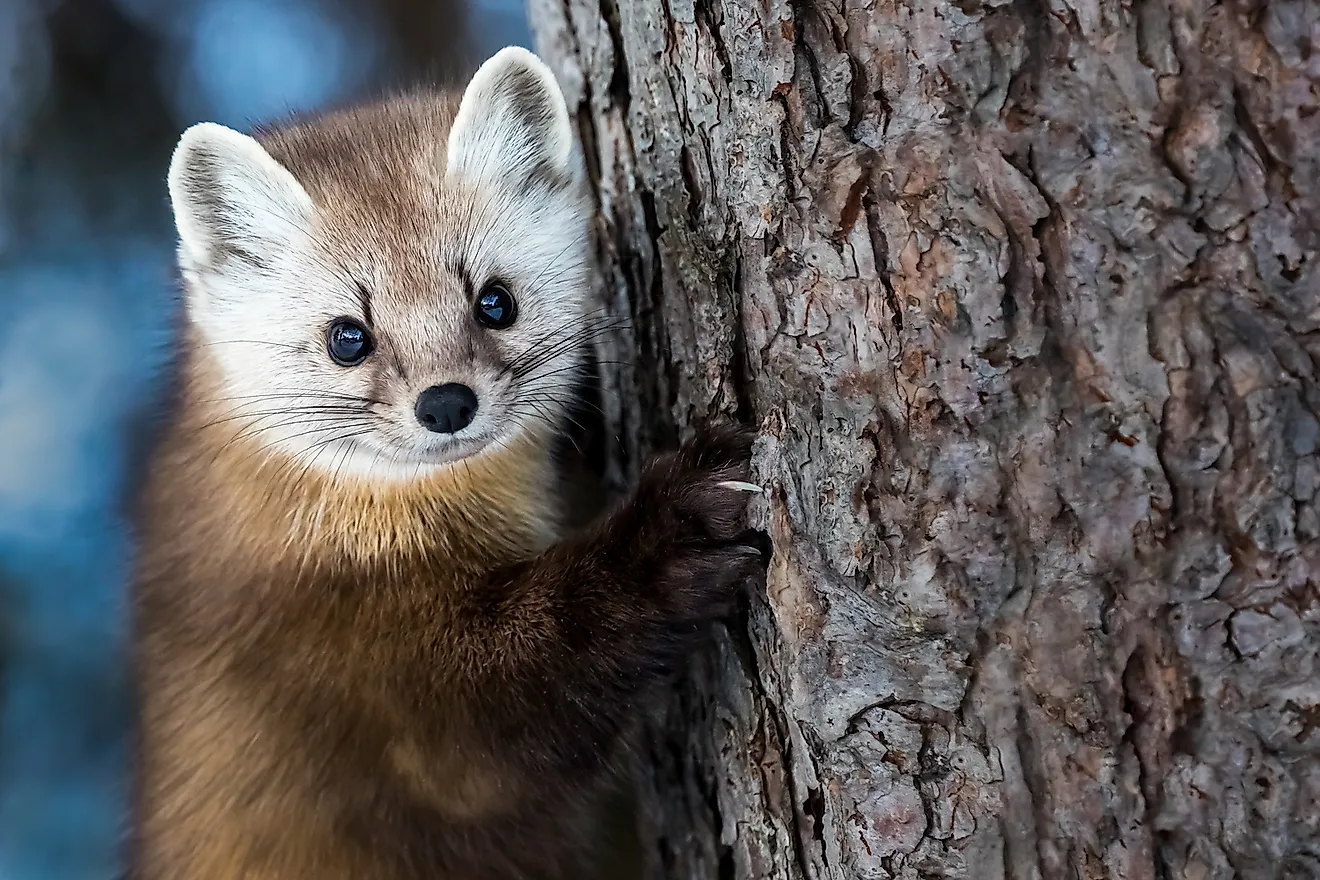
- Canada has many mammalian species that are at risk of extinction primarily due to loss of habitat.
- Canada’s protective act is called the Species at Risk Act (SARA) and is an active list that tracks numbers and health of wildlife populations in Canada with the goal of ensuring the survival and prosperity of Canada’s wildlife.
- One of British Columbia’s most elusive creatures, the Pallid Bat is also the largest of Canada’s bats, and is a threatened species.
- Educated guesses have been made, but there is no proven explanation for the sharp decline in the Grey Fox population that has put them on the list of Canada’s most threatened species.
Canada is home to many unique and awe-inspiring mammalian species. From giant polar bears to adorable otters, elusive foxes, and possibly even the occasional infamous wolverine, the biodiversity in Canada is majestic. Canada comes in at the second-largest country in the world (behind only Russia) and boasts seven distinct physiographic regions: Arctic Lands, Cordillera, Interior Plains, Hudson Bay Lowland, Canadian Shield Forest Lands, St Lawrence Lowlands, and Appalachia.
The array of wildlife in Canada also means that there are many species that are becoming threatened, mainly from loss of habitat. Mammals can become threatened via natural means like an ice age, for example, or as a result of human activity like logging and urban expansion. Globally, as many as 1 million species are threatened currently, making this time in history the most precarious for animal life and biodiversity on earth.
Canada’s protective act is called the Species at Risk Act (SARA) and is an active list that tracks numbers and health of wildlife populations in Canada with the goal of ensuring the survival and prosperity of Canada’s wildlife. The Canadian Government maintains the List of Wildlife Species At Risk in Canada under this Act and it can be viewed at Species at Risk Registry website. The table below provides a comprehensive list of the mammalian specis of Canada that are included on this list. Some examples of such species, both terrestrial and aquatic, have been mentioned below to understand the variety of threats facing Canada's mammals.
Wood Bison
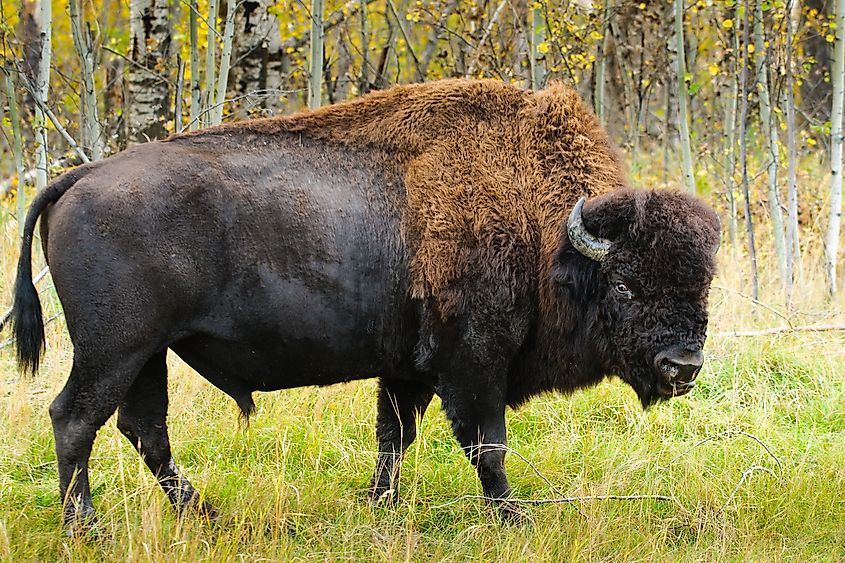
Wood Bison are native to the Canadian plains and are natural prey to wolves in the area. There is common confusion about the terms ‘bison’ and ‘buffalo’. Various explanations exist to explain the misnaming of the creatures, but to sort things out, bison are native to North America, while buffalo are native to Africa and Asia. Due to over-hunting, exotic bovine diseases found in the landscape, and loss of genetic diversity, Wood Bison were at one point on the endangered species list. In the 1800s, Wood Bison numbered only about 200 in Canada. Due to successful recovery efforts, Wood Bison have now been moved to the ‘at risk’ category, meaning that populations will continue to be carefully monitored to ensure that this vulnerable species stays with us.
Sea Otter
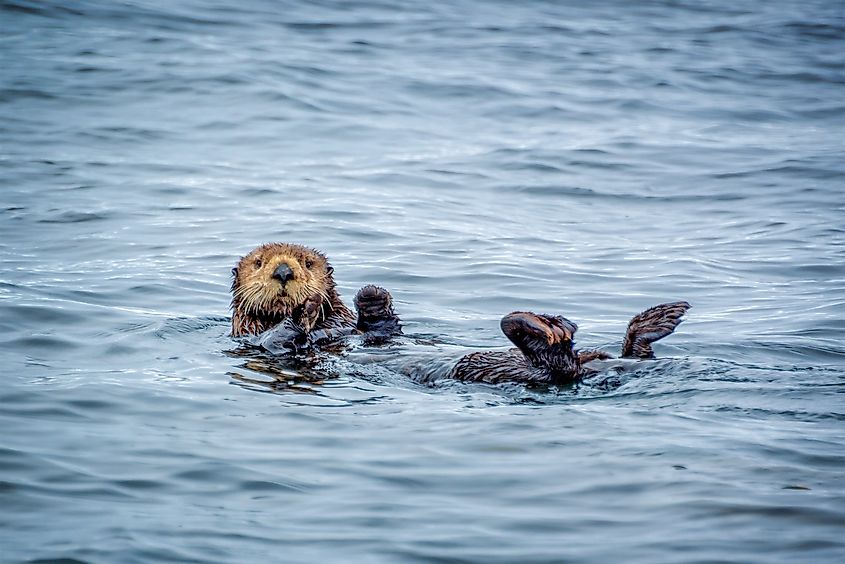
Sea otters have many clever skills, not the least of which is making hearts melt and people say “awww” at the mere sight of these playful animals. Sea otters are the smallest marine mammal in North America, making their homes in the Pacific Ocean. Sea otter populations dipped in the early 1900s, and close to 100 had to be reintroduced to the Pacific North West to bolster the population. Sea otters are prey to bald eagles, killer whales, and sharks. They are vulnerable to environmental contamination such as oil spills and being caught in commercial fishing nets. Despite being on the threatened species list, sea otters are thriving, and will continue to do so as they benefit from the numerous conservation efforts centered on protecting the species.
Killer Whale
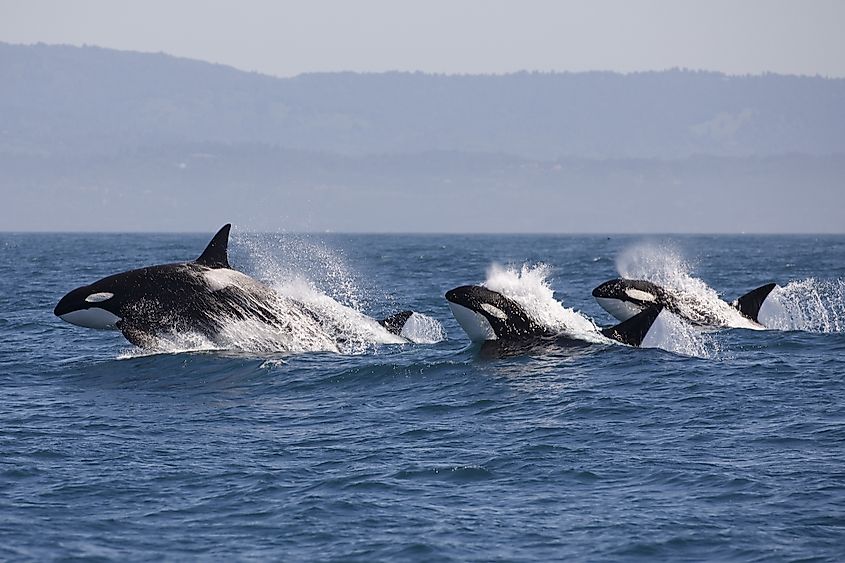
Killer Whales, or Orcas, are symbolic of British Columbia’s Pacific Coast. Found in First Nations mythology and still important in daily life, the Orca is integral to its homeland. Despite being termed Killer Whale, the Orca is actually the largest member of the dolphin family (Killer Dolphin just doesn’t sound quite right…). With their distinctive black and white markings, Orcas are an awesome sight to behold. They are very group-oriented and move in pods through their migratory paths. The biggest threat to Orcas is pollution in the seas from toxic chemicals.
Pallid Bat
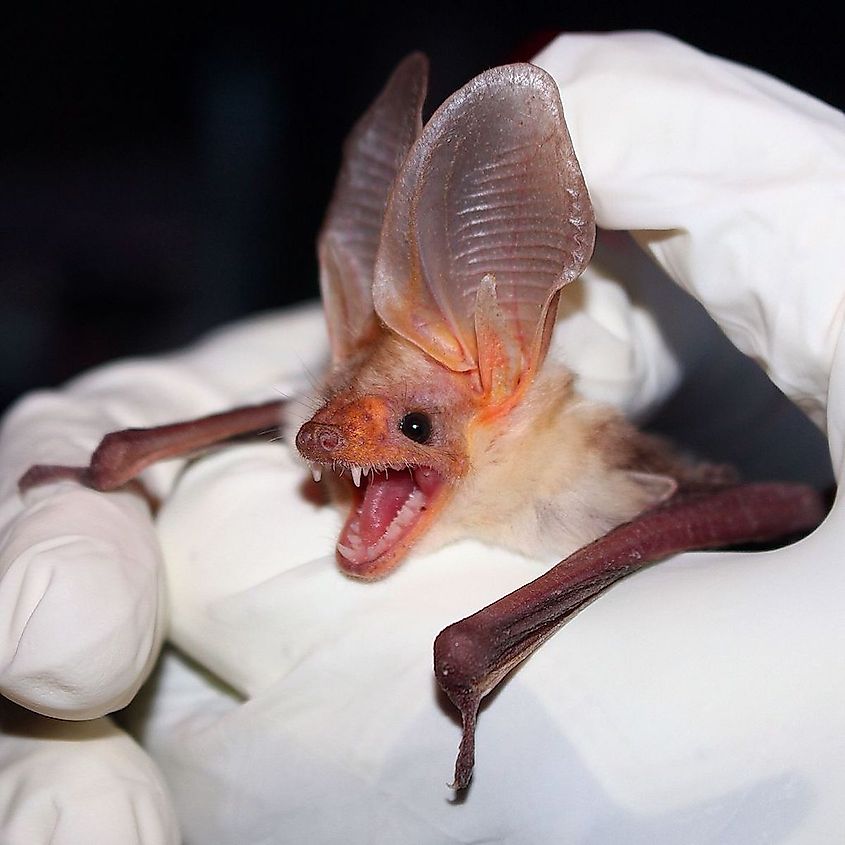
One of British Columbia’s most elusive creatures, the Pallid Bat is also the largest of Canada’s bats. Found exclusively in the Okanagan region of southern BC, Pallid Bats are a threatened species in Canada because the habitat in which they like to roost and breed is very rare. The sandstone cliffsides in the Okanagan Valley is ideal for the preferences of the Pallid Bat, but not easy to come by.
Marten
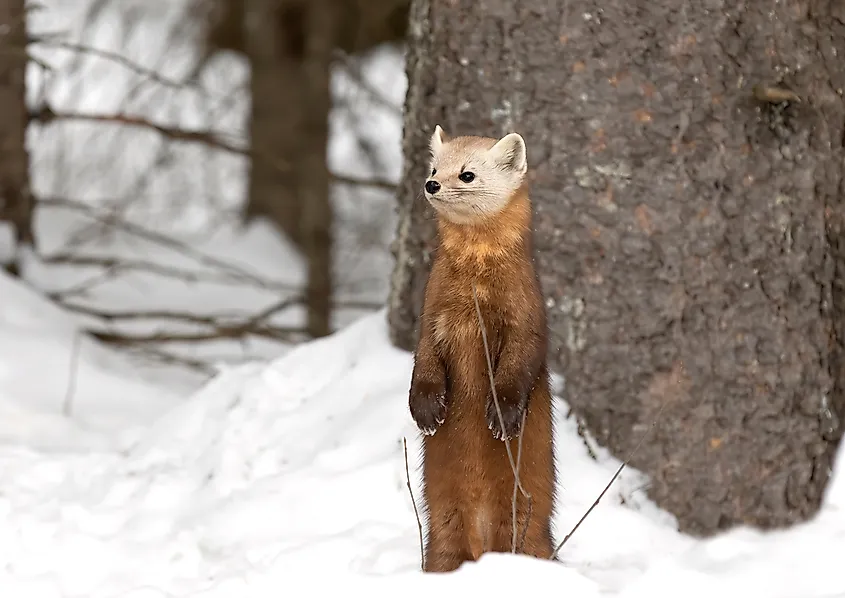
Martens are members of the weasel family, and about the size of a small cat. If you have not seen a marten before, prepare to be charmed by these little creatures fluffy faces and ears, and curious expressions. Martens live in coniferous and mixedwood forests, and as such are vulnerable to losing their habitat to the logging industry. Forestry management projects and studies are underway, however, to both use the Marten as an indicator of the health of forests as well as ensure their conservation.
Black Tailed Prairie Dog
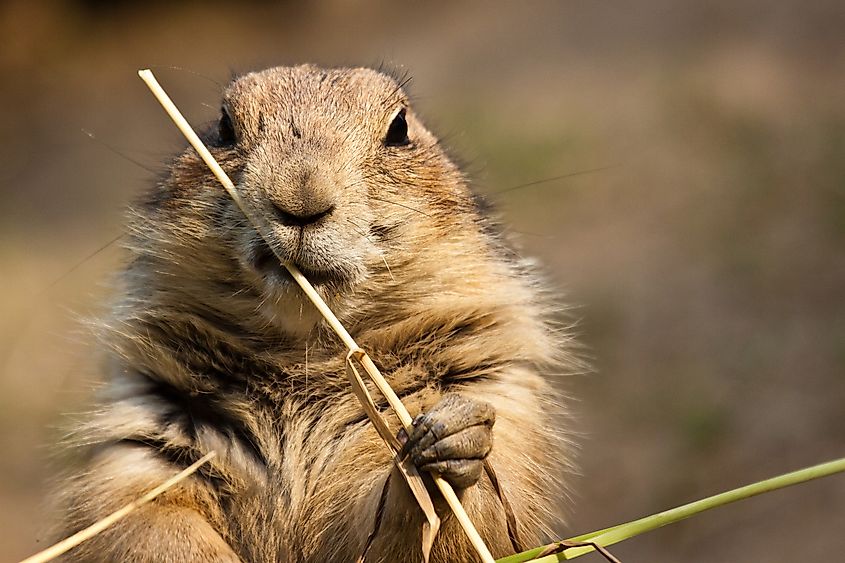
Prairie Dogs are commonly confused with a Richardson’s Ground Squirrel (a “gopher”), but are a very distinct species. This threatened species is quickly distinguishable from the common gopher because they are nearly twice the size. The Black Tailed Prairie Dog is found exclusively in southern Saskatchewan natively. These very social mammals live in large groups, and dig extensive underground tunnel systems, called “dog towns”. The greatest threat to these little mammals is drought and the Sylvatic plague.
Woodland Caribou
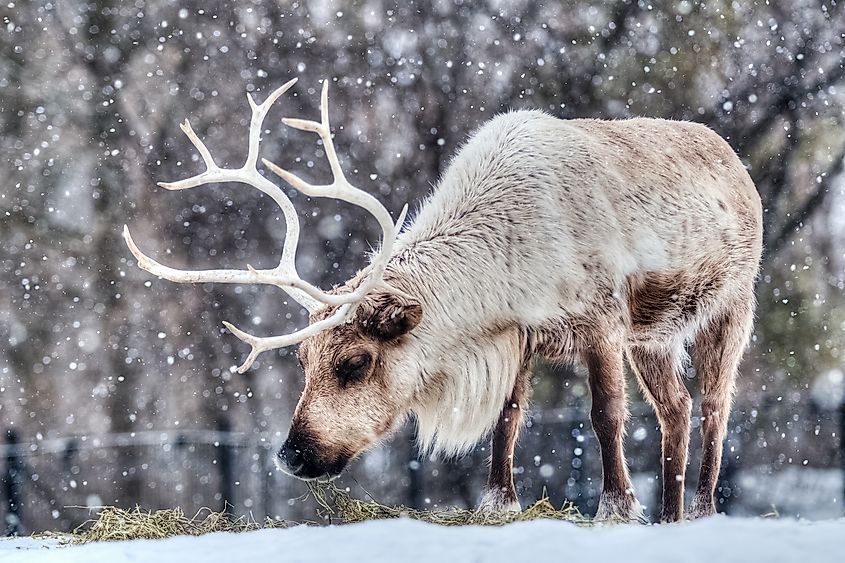
Canada is home to multiple varieties of caribou; the Woodland Caribou make their home in boreal forests along the coast of the Hudson Bay. The boreal population of Woodland Caribou has been listed as a threatened species in Canada since 2003. Woodland Caribou are a vulnerable population for a few reasons. They are not migratory like some of their other caribou family members, meaning that they are subject to the conditions in their areas. They do not tend to move in herds but instead live solitary or in small groups. Any disturbance to the home area of the Woodland Caribou is very distressing to the population. The greatest concern is wildfires, industrial development, fragmentation from road networks, and disease.
Humpback Whale
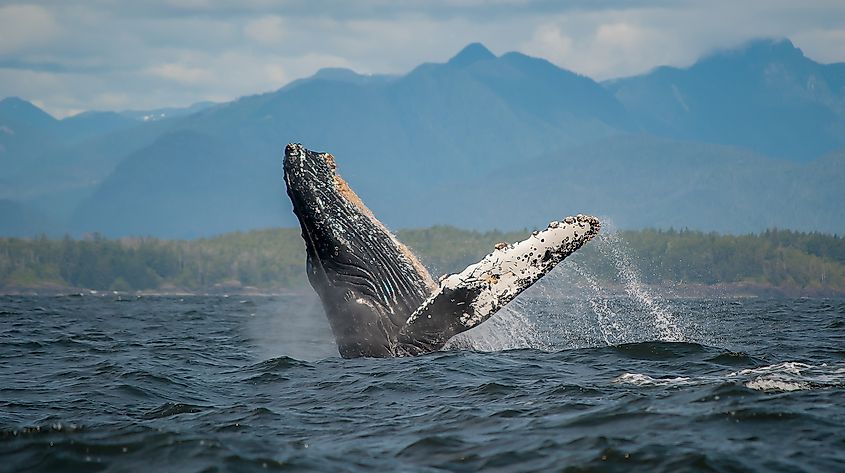
Humpback Whales are an incredibly unique species, with amazing personality. Measuring in at 13-14 meters in length, and up to 45,000 pounds, Humpbacks truly are one of the gentle giants of the sea. Hunted to near-extinction in the early 1900s for their blubber, Humpback Whales were an easy target for whalers because they move relatively slowly underwater. Conservation and re-population efforts have brought the Humpback population to nearly half of what it was prior to the species being over-hunted.
Grey Fox
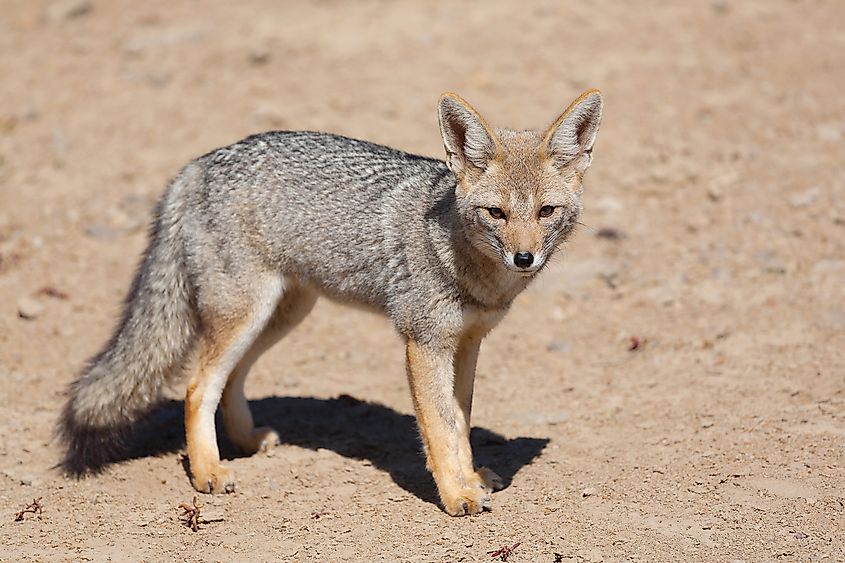
Canada’s Grey Fox is mysterious, secretive, and difficult to study. Educated guesses have been made, but there is no proven explanation for the sharp decline in the Grey Fox population that has put them on the list of Canada’s most threatened species. Normally found in Manitoba and Ontario, the Grey Fox is similar to the Red Fox, but distinguished by its grey fur, and black-tipped tail. It’s cousin, the Red Fox, is more orange in overall color, and has a white-tipped tail.
Beluga Whale
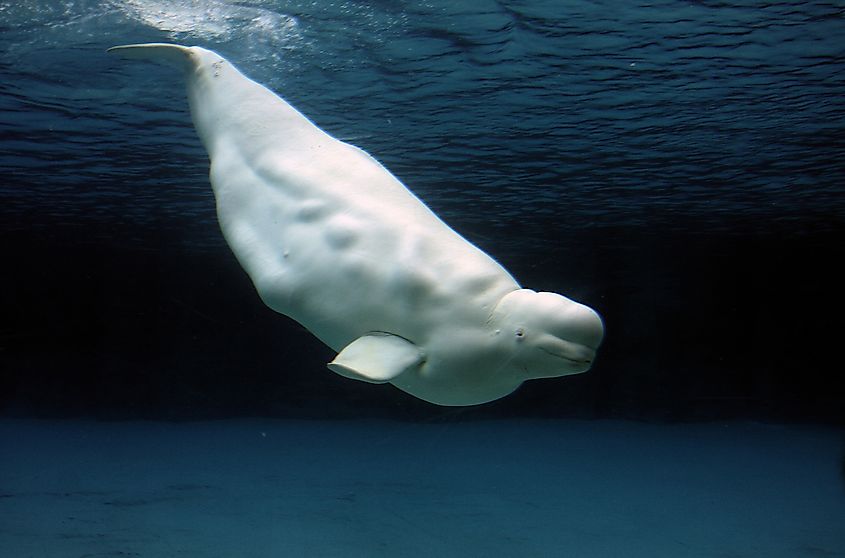
Canada’s beluga whale population can be classed into two groups - those that summer in Canadian waters but spend the bulk of their time in the Arctic, and those in the St. Lawrence Estuary that have been isolated there since the last Ice Age. Belugas enjoy a reputation for being happy-go-lucky and friendly mammals of the sea. According to the Canadian Wildlife Federation, most Belugas eat “octopus, squid, crabs, shrimp, clams, mussels, snails, sandworms, and fishes”. Belugas are considered to be a threatened species due to predation by Orcas, chemical pollution, negative impacts of interaction with fisheries, commercial vessels, disease, and habitat loss.
Species at Risk Act, Canada
| Endangered mammals | Threatened mammals | Mammals of special concern |
|---|---|---|
| Balaenoptera borealis (Pacific population) — sei whale | Antrozous pallidus — pallid bat | Balaena mysticetus (Bering–Chukchi–Beaufort population) — bowhead whale |
| Balaenoptera musculus (Atlantic population) — blue whale | Balaenoptera physalus (Pacific population) — fin whale | Balaenoptera physalus (Atlantic population) — fin whale |
| Balaenoptera musculus (Pacific population) — blue whale | Bison bison athabascae — wood bison | Canis lupus lycaon — eastern wolf |
| Dipodomys ordii — Ord's kangaroo rat | Enhydra lutris — sea otter | Enhydra lutris — sea otter |
| Eubalaena glacialis — North Atlantic right whale | Delphinapterus leucas (St. Lawrence Estuary population) — beluga whale | Cynomys ludovicianus — black-tailed prairie dog |
| Eubalaena japonica — North Pacific right whale | Mustela erminea haidarum — ermine, haidarum subspecies | Eschrichtius robustus (eastern North Pacific population) — grey whale |
| Gulo gulo (eastern population) — wolverine | Megaptera novaeangliae (North Pacific population) — humpback whale | Euderma maculatum — spotted bat |
| Hyperoodon ampullatus (Scotian Shelf population) — northern bottlenose whale | Orcinus orca (Northeast Pacific transient population) — killer whale | Eumetopias jubatus — Steller sea lion |
| Marmota vancouverensis — Vancouver Island marmot | Orcinus orca (Northeast Pacific northern resident population) — killer whale | Microtus pinetorum — woodland vole |
| Martes americana atrata (Newfoundland population) — American marten | Rangifer tarandus caribou (boreal population) — woodland caribou | Orcinus orca (Northeast Pacific offshore population) — killer whale |
| Orcinus orca (Northeast Pacific southern resident population) — killer whale | Rangifer tarandus caribou (southern mountain population) — woodland caribou | Phocoena phocoena (Pacific Ocean population) — harbour porpoise |
| Rangifer tarandus caribou (Atlantic–Gaspésie population) — woodland caribou | Urocyon cinereoargenteus — grey fox | Rangifer tarandus caribou (northern mountain population) — woodland caribou |
| Scapanus townsendii — Townsend's mole | Scalopus aquaticus — eastern mole | |
| Sorex bendirii — Pacific water shrew | Sylvilagus nuttallii nuttallii — Nuttall's cottontail, nuttallii subspecies | |
| Taxidea taxus jacksoni — American badger, jacksoni subspecies | Ursus maritimus — polar bear | |
| Taxidea taxus jeffersonii — American badger, jeffersonii subspecies | ||
| Vulpes velox — swift fox |











